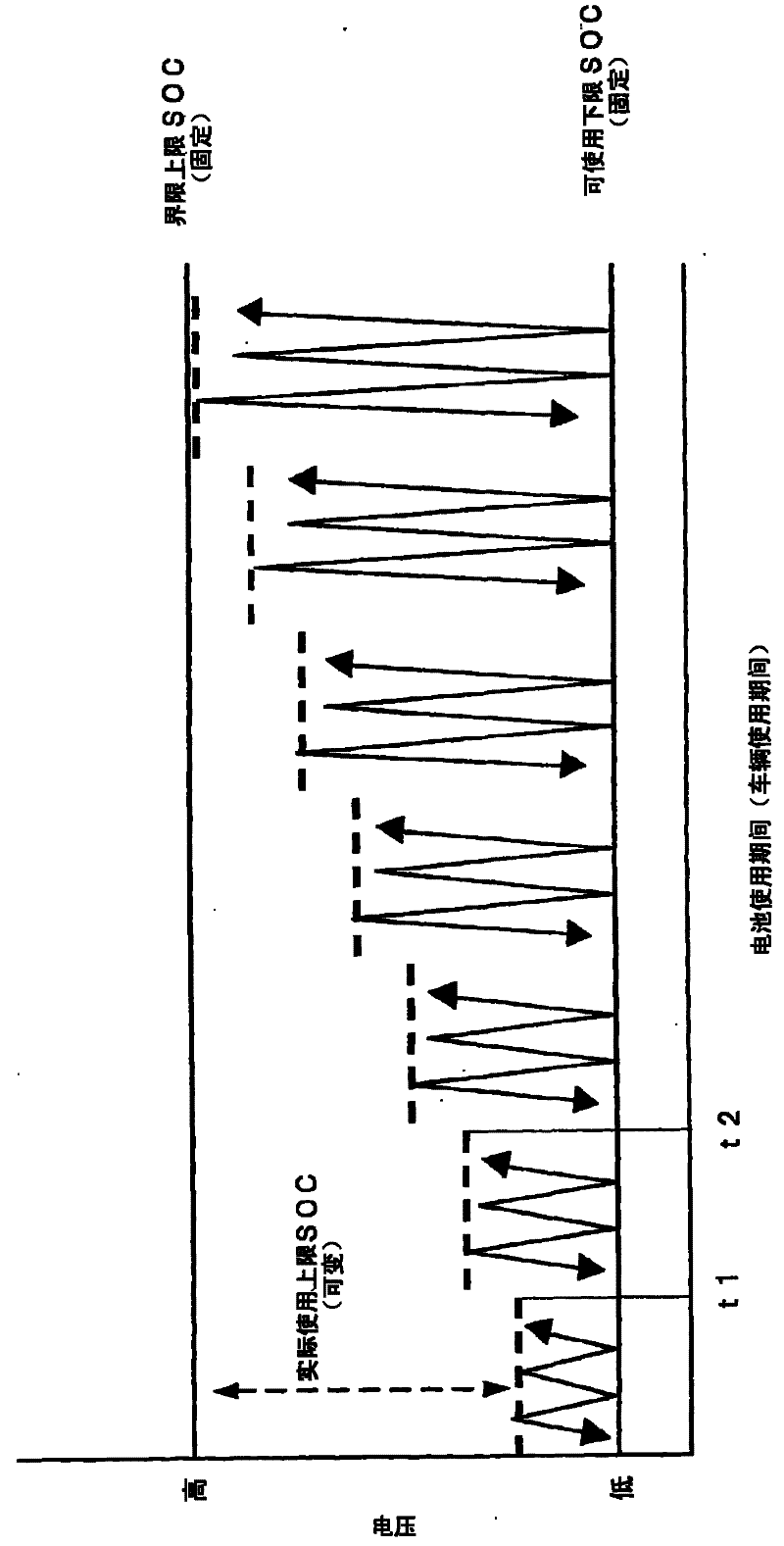Charge control device
A charging control and control unit technology, applied in the direction of circuit devices, battery/fuel cell control devices, battery circuit devices, etc., can solve the problem of battery degradation, user discomfort, and the reduction in the time ratio of regeneration of electric driving distance and other problems to achieve the effect of preventing deterioration
- Summary
- Abstract
- Description
- Claims
- Application Information
AI Technical Summary
Problems solved by technology
Method used
Image
Examples
no. 1 approach
[0087] Hereinafter, a charging control device according to a first embodiment of the present invention will be described with reference to the drawings.
[0088] An HEV (Hybrid Electrical Vehicle: Hybrid Electric Vehicle) includes an electric motor and an internal combustion engine, and travels using the driving force of the electric motor and / or the internal combustion engine according to the running state of the vehicle. HEVs are broadly classified into two types: series connection and parallel connection. A series-type HEV travels using the driving force of an electric motor powered by an accumulator. The internal combustion engine is used only for power generation, and the electric power generated by the driving force of the internal combustion engine is charged to an accumulator or supplied to an electric motor. On the other hand, a parallel-type HEV travels using the driving force of either or both of the electric motor and the internal combustion engine. In addition, ...
no. 2 approach
[0143] Hereinafter, a charging control device according to an embodiment of the present invention will be described with reference to the drawings.
[0144] An HEV (Hybrid Electrical Vehicle: Hybrid Electric Vehicle) includes an electric motor and an internal combustion engine, and travels using the driving force of the electric motor and / or the internal combustion engine according to the running state of the vehicle. HEVs are roughly divided into two types: series and parallel. A series-type HEV travels using the driving force of an electric motor powered by an accumulator. The internal combustion engine is used only for power generation, and the electric power generated by the driving force of the internal combustion engine is charged to an accumulator or supplied to an electric motor. On the other hand, a parallel-type HEV travels using the driving force of either or both of the electric motor and the internal combustion engine. In addition, there is also known a series-p...
PUM
 Login to View More
Login to View More Abstract
Description
Claims
Application Information
 Login to View More
Login to View More - Generate Ideas
- Intellectual Property
- Life Sciences
- Materials
- Tech Scout
- Unparalleled Data Quality
- Higher Quality Content
- 60% Fewer Hallucinations
Browse by: Latest US Patents, China's latest patents, Technical Efficacy Thesaurus, Application Domain, Technology Topic, Popular Technical Reports.
© 2025 PatSnap. All rights reserved.Legal|Privacy policy|Modern Slavery Act Transparency Statement|Sitemap|About US| Contact US: help@patsnap.com



